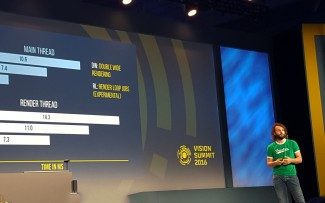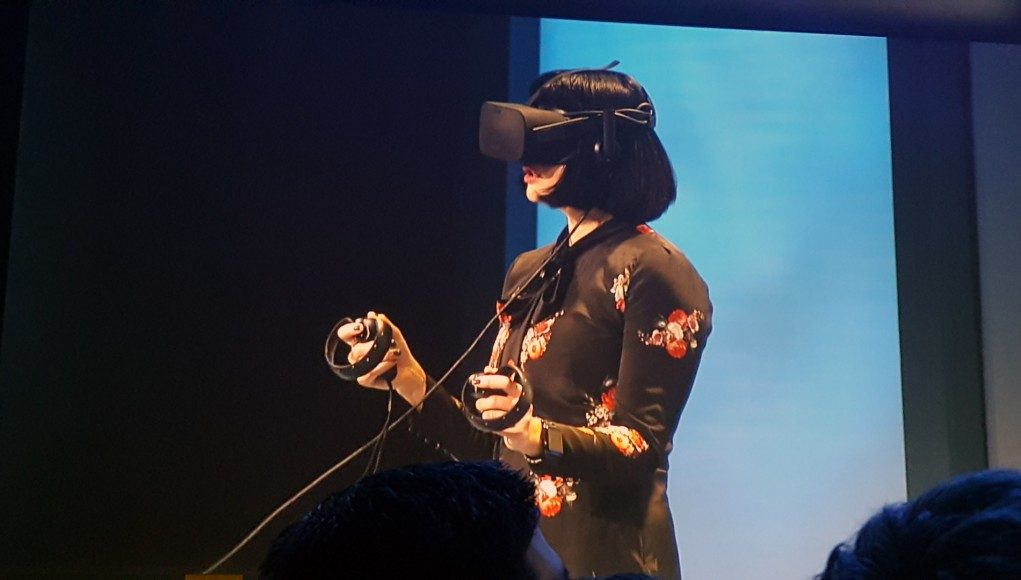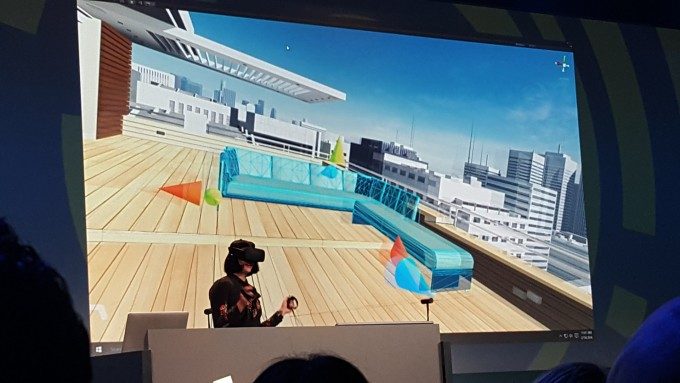Today at Vision Summit 2016 in Hollywood, Timoni West, principal designer at Unity Technologies, took the stage to show Unity’s answer to the recently revealed Unreal Engine 4 VR editor.
West demonstrated Unity’s newly revealed VR scene editor using the Oculus Rift and Touch controllers, where she created a modified a scene within virtual reality. Competitor Unreal Engine revealed similar prototype functionality just last week using an HTC Vive Pre.
In Unity’s implementation, the interface elements, which are tied to the Oculus Touch controllers, naturally allowed West to pull out assets, place them, resize them, and make a number of modifications to make an entire balcony scene around her.

According to West, “in the long term the vision is that [the VR editor] should be just as customizable as Unity is in 2D. You should be able to pull off assets, put them where you want, put windows where you want… make a little utility belt.”
Now with two of the largest game engines soon to offer in-VR options for content creation—and not to mention both are free of charge—we expect to see a renaissance of interest in the space as traditional game developers investigate further into supporting VR for their projects. Because after all, selecting an item and placing it down with your own two hands is as natural and approachable as it gets.
We have boots on the ground at Vision Summit 2016, and we’ll be bringing you the latest news throughout the conference.







